Today I’m writing about an important topic for every landscape painter: drawing. Typically when we think of that word, it conjures up many things, from simple linear sketching, to full-blown chiaroscuro renderings. The aspect of drawing that I’m drilling down on today is accuracy of placement and proportion, which are necessary ingredients in the creation of a painting.
The ability to create accurate drawings is a must for any artist. After many years of teaching painting classes, both at the community college, the Scottsdale Artist’s School, and private workshops, it seems to me that drawing problems are the number one stumbling block for many of the students I have had the privilege of working with. It’s the elephant in the living room so to speak, the underlying nuisance that many artists try to ignore, push aside, deal with later, or hope gets better over time. The problem is, it won’t get better without a procedure to rectify what’s wrong.
I think part of the problem is that drawing is often viewed as something that should have been learned as a child, or possibly is viewed as a subject that is too basic for painters to concern themselves with at this stage of life. And yet, there it is . . . always lurking about, that gnawing, embarrassing little problem that’s really not so little after all!
If this sounds at all familiar to you and you would like to improve your drawing ability, please read on and let’s shine a light on this challenge once and for all! The good news is, you don’t have to stop painting in order to improve your drawing; it’s not an either–or situation.
Drawing Skills Are a Tool
First off, the ability to draw is a wonderful thing and one of the most rewarding aspects of art. Therefore, it is important to look at drawing for what it really is and give it the respect it deserves. Essentially, it is one of the most versatile tools in the painter’s arsenal. Drawing can stand alone as a finished work of art, or take a back seat in a painting, like the supporting cast in a play. Drawing is the epitome of a team player and, for that reason, should be viewed as the backbone of every painting ever created.
We’ve all heard the old saying that “value does all the work, but color gets all the credit.” But where would value be in a painting without drawing to give it context? As to its “basicness,” it’s absolutely a basic skill and every bit as basic and essential as color, values, edges, and brushwork. We ignore it at the detriment to our own work!
Now that the problem is identified, what is the solution? Okay, don’t hit me over the head with your easels yet, but it is practice, practice, and more practice! Yeah, we’re not going to escape that one! Filling up sketch books is the real answer.
“But wait a minute,” you’re saying. “We’ve gotten this far into the article just to be told to practice?” Well, yes and no, because lots of practice, by itself, can lead to nowhere . . . it’ll just take you longer to get there! A person can fill up sketchbooks with a lot of lousy drawings for years and never get any better, right? The answer lies in practicing smart, not hard, or perhaps smart and hard.
“So, how does one practice smart,” you ask? The answer is by applying some basic principles that can be put into immediate use in your work. The following ten principles will aid you in achieving competent drawings, which are the basis of any good representational painting. Keep in mind that shading, as well as other ways to create the illusion of light, form, and detail in a drawing, has been purposely left out in order to focus on accuracy and placement of line. This is in no way a complete explanation of the topic, and further study on the various principles is highly recommended to anyone wishing to improve their skills in drawing.
The 10 Drawing Principles That Will Improve Your Paintings:
Measurement
The arc
Angles
Plumb lines
Level
Mapping
Positive and negative shapes
Triangulation
Perspective
Drawing with straight lines
Here’s how they work. I am including ten photos of the same subject in order to illustrate each of these principles one at a time. Let’s take measurement first:
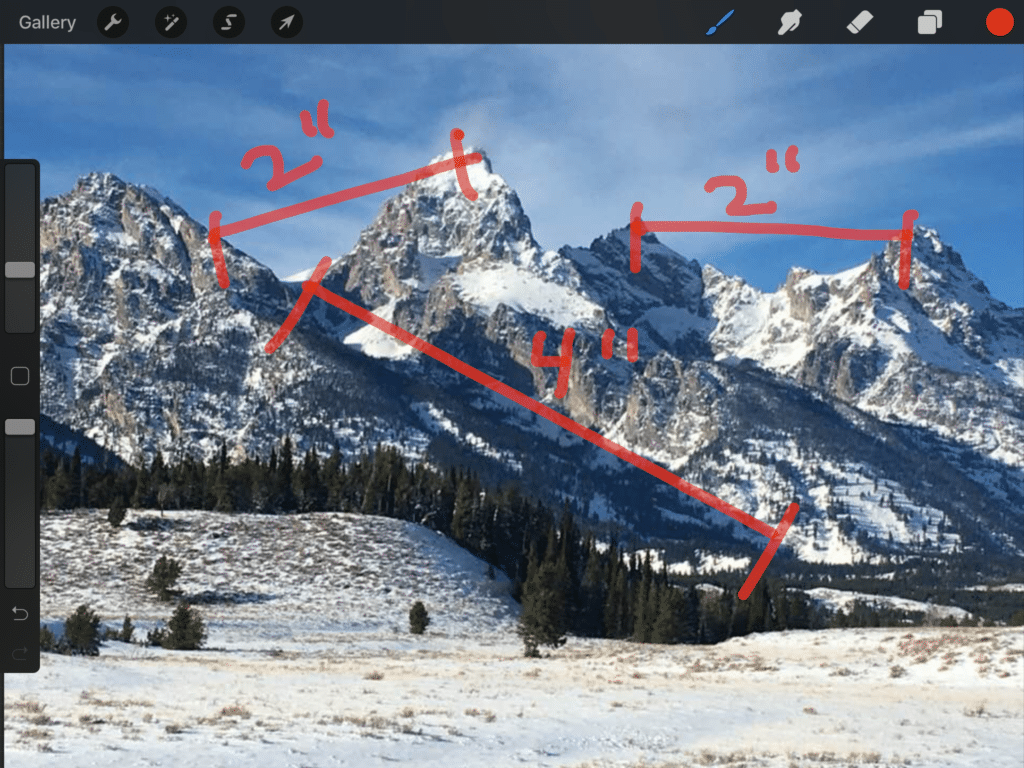
1. Measurement
This is an important consideration, which runs throughout all of the other principles; when in doubt, measure using the handle of a brush and your thumb to check distances between two points. When doing this, make sure that your arm is held out straight, in order to ensure that all measurements are being judged the same way. You can also use a ruler if you get right down to it. Whatever works, use it!
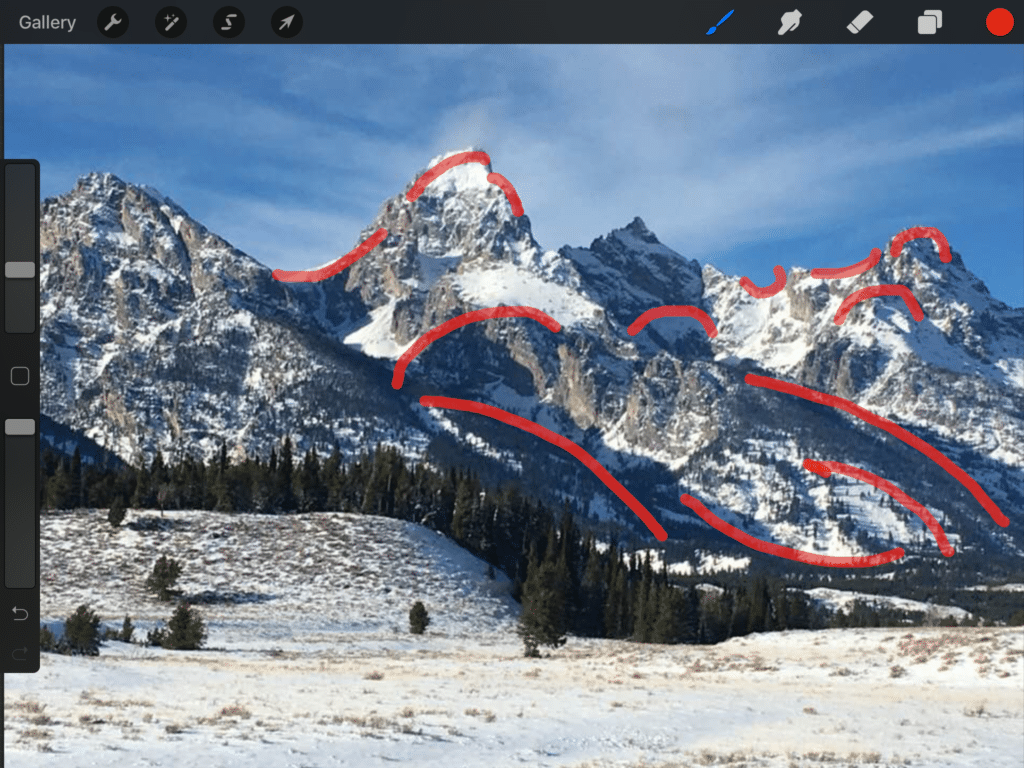
2. Arcs
These are whole or partial circular shapes on the subject you are drawing that vary in size. Artist and illustrator Joseph Mugnaini covers the arc and the angle in his book “Expressive Drawing: A Schematic Approach” (1988), in his chapter on design and composition. Though the idea is simple, it has far-reaching possibilities for a way of looking at the drawing process. An example of this could be a figure, where there is an arc at the top of the shoulder along with an angle, which is the position of the upper arm. As you might imagine, there would be many arcs and angles on this same figure. Lots of examples can be found in the landscape as well. Look for arcs and angles next time you are drawing.
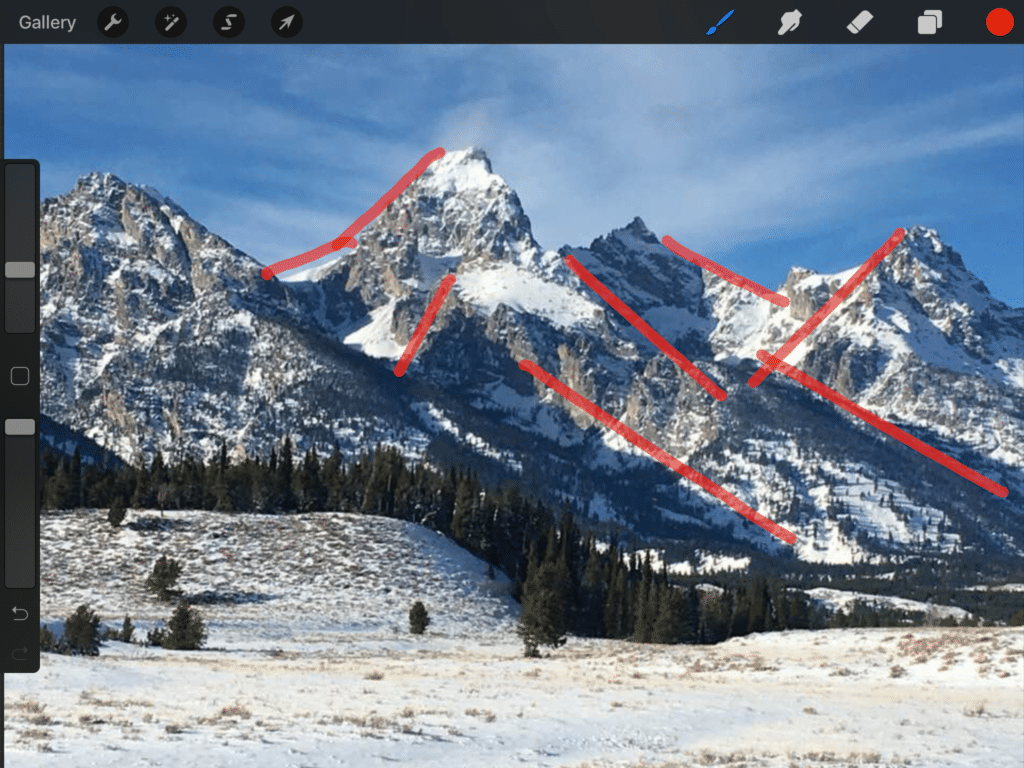
3. Angles
Angles can be vertical, horizontal, or diagonal. Again, using the brush handle to gauge a form’s tilt is an excellent way to help you arrive at correct angles in your drawing. The beauty of this way of working in the initial stages is that you don’t have to include all the minor undulations and contours of the form you are depicting. You simply represent the major angles and directional changes of the form in order to place it accurately on the canvas. Embellishments can be added later. Remember to check one angle against others on your subject; these constant comparisons are what make for accurate depiction.
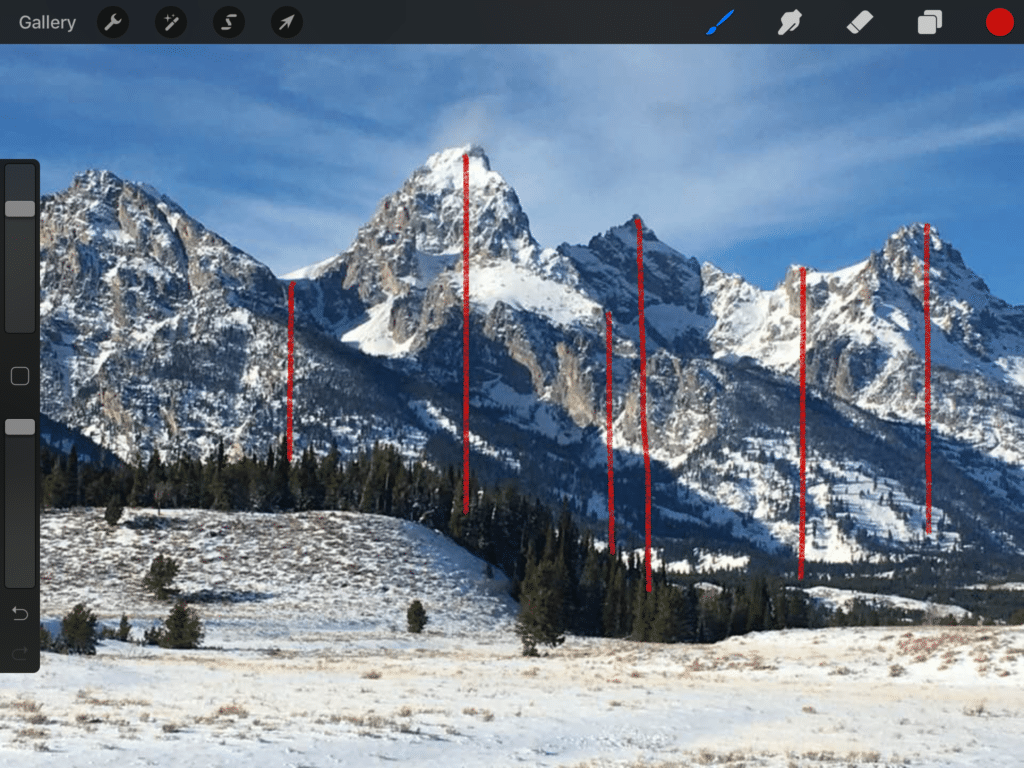
4. Plumb lines
The term is taken from the “plumb bob” in carpentry. These are lines that are positioned up and down and used to align various points in a drawing on a vertical path. The plumb line also acts as a standard, used to “level” or “square” horizontal lines. Additionally, you can use the sides of the canvas to align things on the drawing. In the studio, a T-square may be helpful to get your first correct plumb lines and horizontal lines on a large canvas.
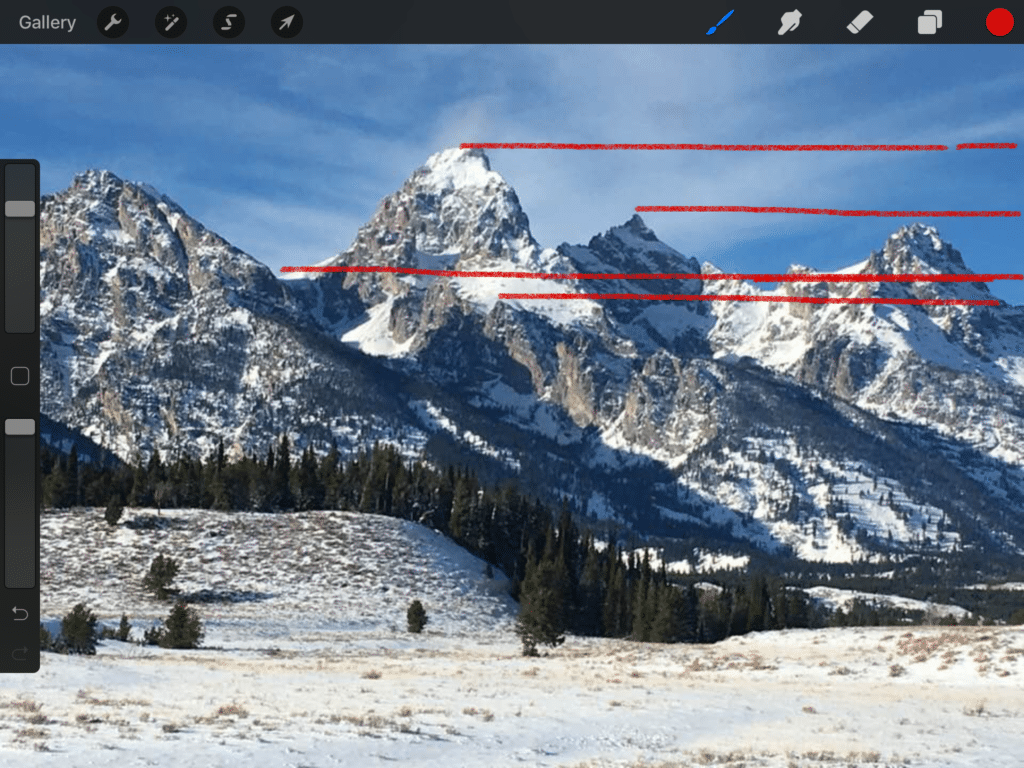
5. Level
In the same way that plumb lines are used to align vertical points on the drawing, level lines can be used to line things up horizontally. Keep in mind that these lines can be real physical marks on the canvas or just mental notes. When you think about it, plumb lines and level lines are just another type of angle, as spoken of above.
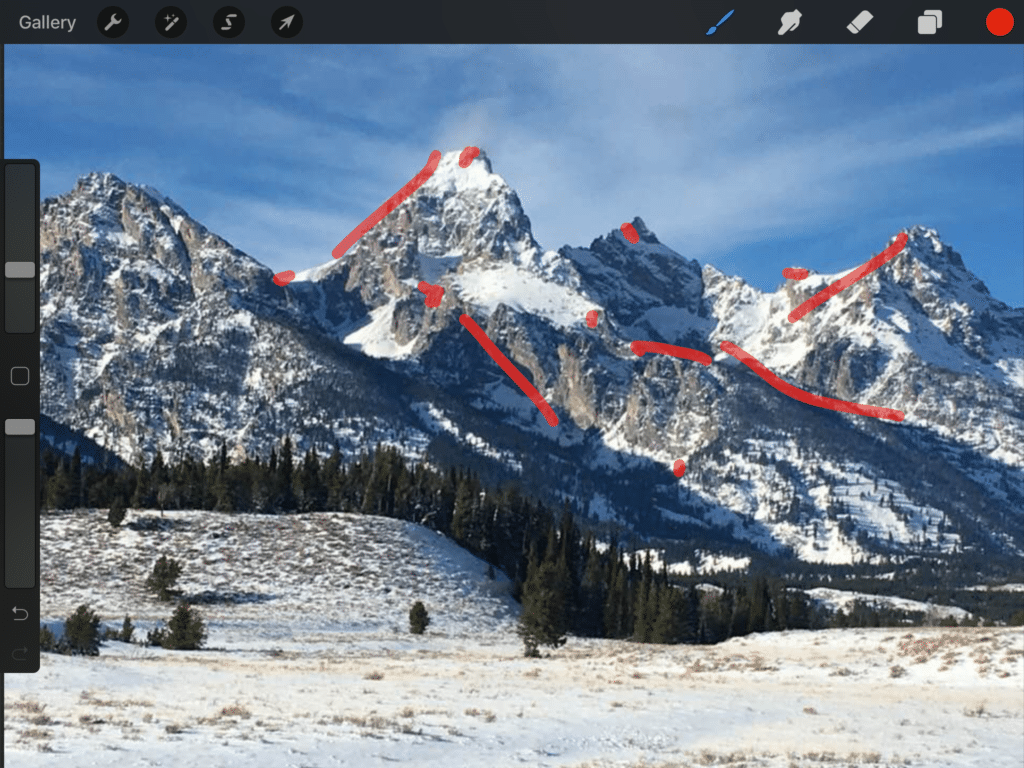
6. Mapping
This is the general placement of key points on your subject, using dots, arcs, and lines, to map out where they go in the drawing. John Howard Sanden’s book “Painting the Head in Oil” is a great resource on this subject and on several of the other drawing principles listed here.
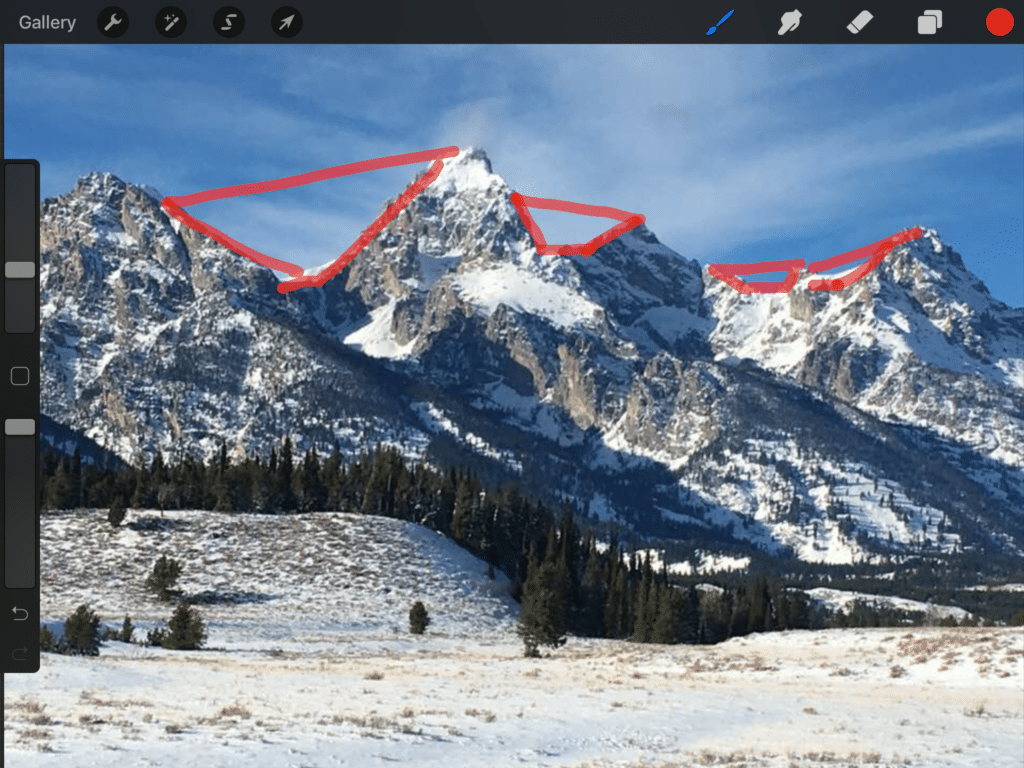
7. Positive and negative shapes
These shapes help the artist to see relationships through a process of comparison, as a way to enhance accurate drawing. Negative shapes are generally thought to be background shapes in and around your positive shapes. An example of this might be the space between two trees or the shape that is created in the crook of an arm when a person has their hands on their hips. There are many other possible examples. Artists need to use both positive and negative shapes because they are equally important in getting accurate drawings. The next time you are trying to figure out if your drawing of a positive shape is accurate, look at the negative space around the form; you may be in for a surprise!
Score 240 plein air painting tips
when you sign up for the free Plein Air Today newsletter!
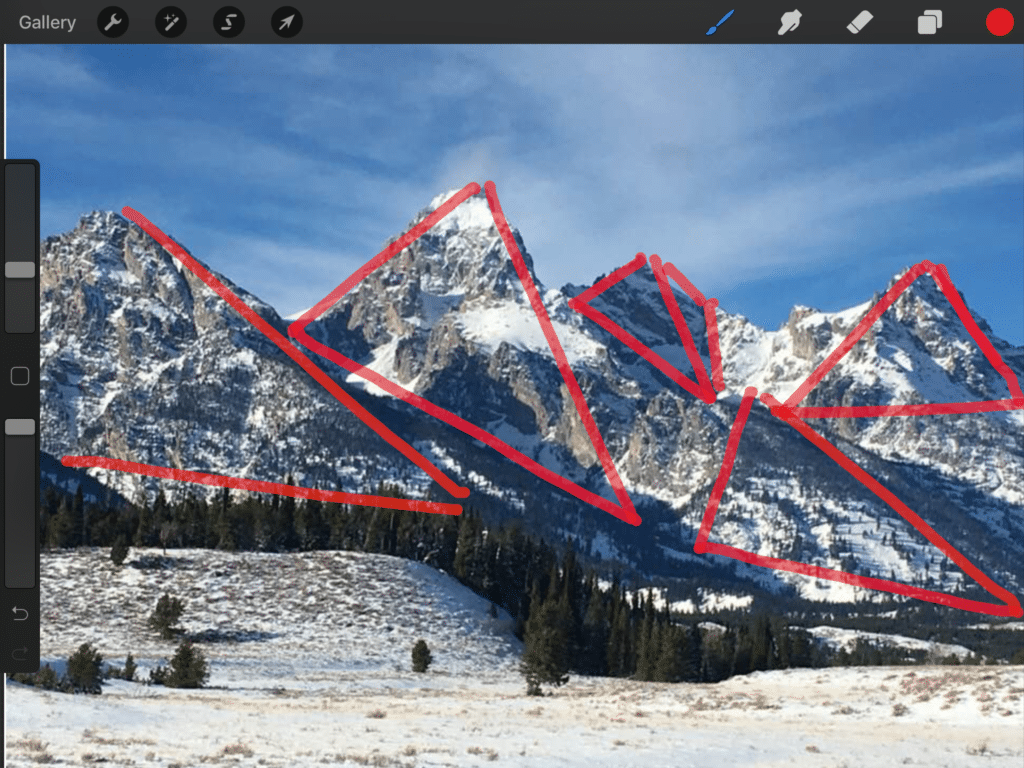
8. Triangulation
Triangulation helps the artist see proportions based on three specific points on their subject. Using lightly rendered lines that connect these three points, the artist can then set up a triangle to judge relative proportion and distance between these points. Triangulation is just another way to step outside the visual box and see things differently to arrive at drawing accuracy.
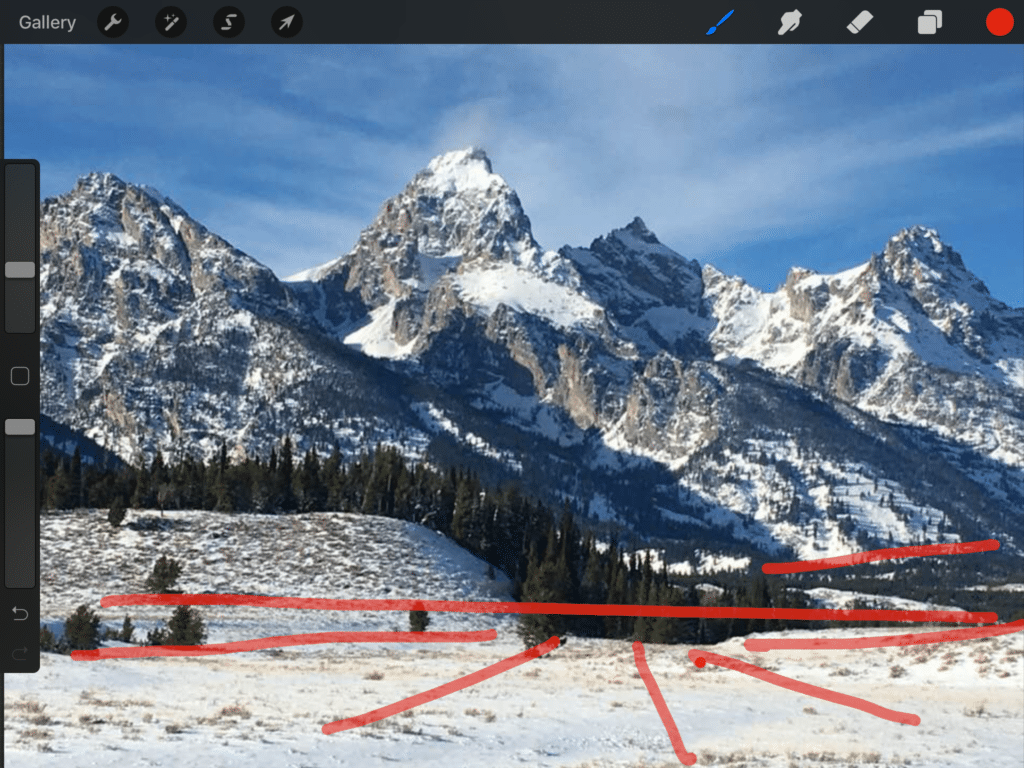
9. Linear perspective
This is the illusion of linear space in a landscape, cityscape, or seascape that is gauged from a certain position in space. This type of perspective is usually associated with street scenes, where edges of buildings and curbs on sidewalks lend themselves to linear imagery. While the natural environment is more abstract and therefore more difficult in imagining a series of lines running through it, the principle still applies as an aid to drawing. Linear perspective can be thought of as a series of lines that are used to sink various points in a scene as they recede into the distance.
Knowing where the horizon line is, along with understanding the principle of vanishing points helps in determining the perspective of various objects and their relative angles. Remember, the word perspective means what you are seeing from where you are standing. Also, if you are sitting or lying down in relation to your subject, it is still all about the level of your eye that creates the concept of a horizon line.
If you are looking down on your subject, your perspective lines will be different than if you are seeing the subject from below. If you are looking straight across at the subject or to the left or right of it, your perspective lines will change again. Remember, the horizon line always stays at eye level. The study of linear perspective is something that all artists should take the time to explore.
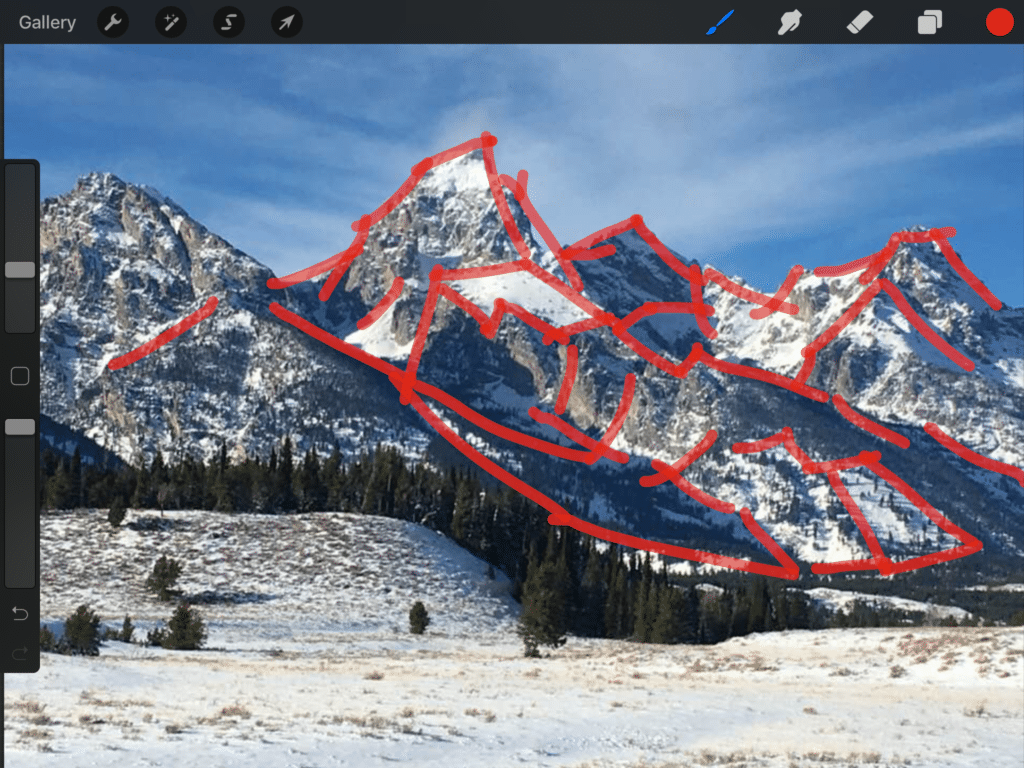
10. Drawing with straight lines
The best way to describe this is to say that employing all of the angles described above along with arcs, triangulation, and positive and negative spaces in a loose manner will produce this type of drawing. It is often tempting for artists to start out a drawing by putting in all of the many twists and turns of expressive line right from the start, but this approach may often lack the overall relationships that will make for an accurate drawing. Keeping this in mind, many seasoned artists will opt for using a light line to get the major angles and mapping right, and then come back with nuances of shape as the drawing progresses.
Most likely you have had the occasion in the field, or at an art event when someone comes up to you and says, “I can’t even draw a stick figure.” The intended meaning is that they have no artistic talent. This may be true or not, but the real reason they can’t draw is most likely that they don’t have the desire to learn or have not been instructed properly. The principles of linear drawing can all be taught in a logical way, just like balancing a checkbook or adding up a column of numbers.
In other words, it’s akin to learning any other skill, like playing a musical instrument, horseback riding, or karate; they are all teachable skills. To be sure, not everyone who tries is going to be a concert pianist, black belt, or even a great horseback rider, but the rudiments can be learned by anyone who wants to put in the time. I hate to take the mystery out of the process, but drawing, in and of itself, is pure mechanics, not art. The ability to read and write does not make one a great orator or writer. In the same way, the ability to draw doesn’t necessarily make one a great artist, but it sure can help a person toward that end!
A final thought . . . I did not invent these principles. They are the result of time-tested methods that have been passed down through the ages by gifted artists/teachers, who were and are willing to share their knowledge. My only contribution is that I have organized this list of principles into a form that makes sense to me, and I hope to others as well. Please enjoy and use these principles in your efforts to be more skilled in the area of drawing!
Which of these principles do you find the most challenging? Which are you most comfortable with? Please feel free to comment on this article below.
> Click here to subscribe to the free newsletter, Plein Air Today
> And click here to subscribe to PleinAir Magazine so you never miss an issue!
> Looking ahead, join us in January 2021 for Watercolor Live!

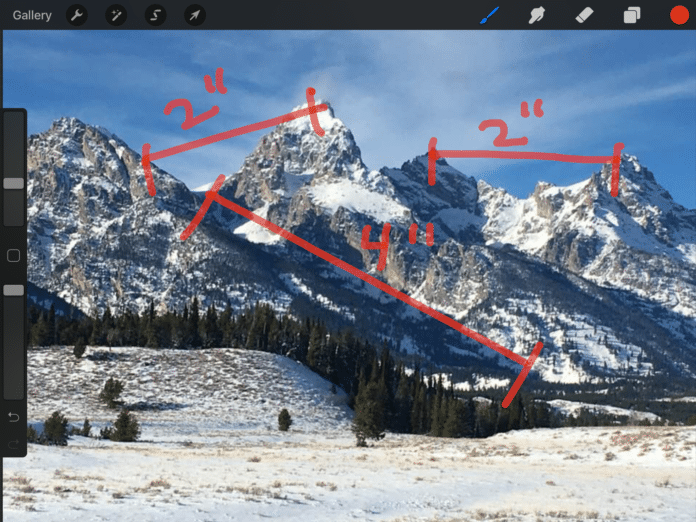



In addition to these Wonderful drawing tools I really love a quick simple 3 x 3 grid to find my landmarks. Immensely useful. Thank you- great stuff!
Thank You Joanne!
Great article John!
Thank you Earl!
Thank you, John! Some things I’ve heard people said over and over again, but they didn’t make sense to me until I read the way you worded them and then the lightbulb turned on! I actually took notes in my sketchbook! 🙂
Very poor choice of font color over the “wall paper” background. Not easy to read.
Great article, John…as I teach also it was nice to see someone define the technical terms so well! I tell my students that one can not literally teach “Art” , but we can teach the principals…the “Art” part has to mostly come from them…their own voice so to speak. All the technical things can be mastered..but as you say it takes a lot of time and study and most people just to not want to do that part..the interest or love is just not there..those of us who love to draw it is not an issue, but that is true of all difficult endeavors …one needs to love it to really get great at it!! I also find that eventually if one has mastered any or all of the principals and then rely on their judgement is when the real exciting things start to happen!! Thanks, again>
Thanks Ned, I appreciate to taking the time to write and for your insights!
thanks for bringing these ideas together for our use as plein air artists. I need to review these when I get ready to go outside to paint.
Thanks Bruce!
Nice summary!
Thanks Simona!
Great article! About a third of the principles I’ve never heard of. Is there a book that you found useful to learn the 10 items you referenced?
Hi Christine, mostly a compilation of books, a little here and a little there.
Thanks for the great article John – makes you think! For someone who’s still very much in the early stages of learning it all makes sense. I’m going to print out the list and take it with me as a reminder for when I next paint outdoors (which isn’t very often in Britain!).
Thank you Lisa, I’m glad this article will be helpful!
Great article & thanks! I notice I did most of what you describe when trying to scale up a small painting today & I’m reminded that when my paintings become too glib or start to give me trouble it’s time to go back to a healthy dose of life drawing!
Good point, Thank you SM!
Thank you, i think I’ll go do some drawing now!
Thank you Joyce!
Thanks. This is incredibly helpful.
Thanks for this reminder list. It helps focus on relationships. I have these notes permanently in my sketch book. You are truly insightful and a master teacher.
Thanks
Thanks Chris and Chuck for each of your comments!